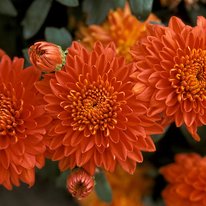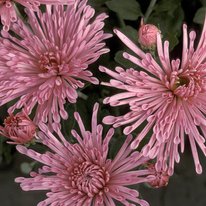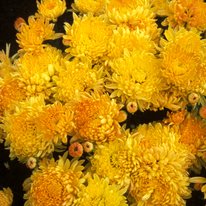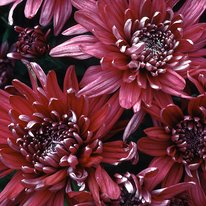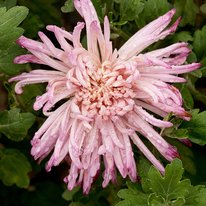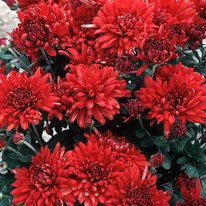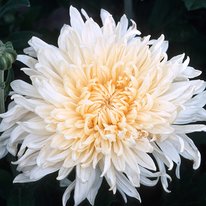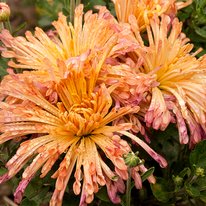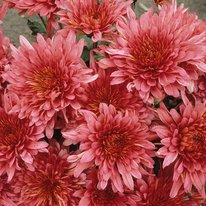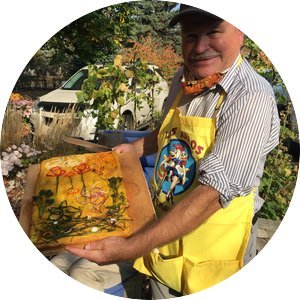Upright is the traditional chrysanthemum growth habit with long stems with flowers at the top of the plant. Plants grow to a height and spread of 18 to 24 inches.
University of Minnesota Upright Growth Habit Chrysanthemums Varieties
Burnt Copper
- Orange bronze, 3 inch, double pompom flowers
- Tall, upright growth habit
- Midseason bloom period
- Plant grows over 18"
- Released in 1988
Centerpiece
- Rose lavender with gold center, 4 inch, quill/spoon flowers
- Tall, upright growth habit
- Midseason bloom period
- Plant grows over 18"
- Released in 1982
Gold Country
- Peachy yellow, 4 inch, fully double decorative flowers
- Upright growth habit
- Midseason bloom period
- Plant grows over 18"
- Released in 1983
Grape Glow
- Bright rosy purple, 3.5 inch, flat decorative flowers
- Upright growth habit
- Midseason bloom period
- Plant grows from 12 to 18"
- Released in 1988
Lindy
- Lavender pink, 4.5 inch, quilled incurve flowers
- Tall, upright growth habit
- Midseason bloom period
- Plant grows over 18"
- Released in 1974
Maroon Pride
- Dark red, 3.5 inch, flat decorative flowers
- Upright growth habit
- Early bloom period
- Plant grows over 18"
- Released in 1989
Mellow Moon
- Cream, 4.5 inch, semi-incurved decorative flowers
- Upright growth habit
- Midseason bloom period
- Plant grows from 12 to 18"
- Released in 1983
Peach Centerpiece
- Peach colored with gold center, 4 inch, quill/spoon flowers
- Tall, upright growth habit
- Midseason bloom period
- Plant grows over 18"
- Released in 2000
Rose Blush
- Mauve, 2-3 inch, decorative flowers
- Upright growth habit
- Early bloom period
- Plant grows over 18"
- Released in 1993
Plant size measurements refer to first-year plants properly spaced and grown in full sun.
Bloom period represents average state-wide appearance of first blooms. Early: Starts blooming before September 1; Midseason: September 1-15; Late: After September 15.
Commercialization and licensing
Peach Centerpiece is not protected by US Plant Patent or foreign plant breeders' rights, but nurseries propagating this variety can support the U of M breeding program through an agreement with the Minnesota Nursery Research Corporation (MNRC). The MNRC is a non-profit horticultural organization that sponsors scientific research for the commercial growing industry. Since 1957, MNRC has collected voluntary payments from propagators of U of M ornamental and fruit introductions and contributed over $2.5 million to the U of M Department of Horticultural Science. Generous MNRC participants are dedicated to supporting research science and breeding efforts. They believe in the development of cold hardy, disease resistant, prolific and profitable future cultivars and varieties.
If you are a propagator and would like to support the future of the industry by participating in MNRC, please email Pat Bailey, MNRC President, at [email protected].

